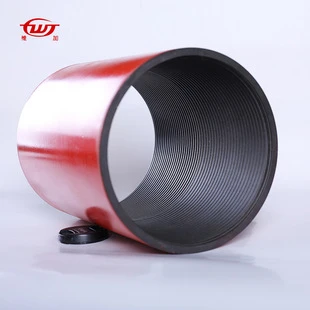- Afrikaans
- Albanian
- Amharic
- Arabic
- Armenian
- Azerbaijani
- Basque
- Belarusian
- Bengali
- Bosnian
- Bulgarian
- Catalan
- Cebuano
- Corsican
- Croatian
- Czech
- Danish
- Dutch
- English
- Esperanto
- Estonian
- Finnish
- French
- Frisian
- Galician
- Georgian
- German
- Greek
- Gujarati
- Haitian Creole
- hausa
- hawaiian
- Hebrew
- Hindi
- Miao
- Hungarian
- Icelandic
- igbo
- Indonesian
- irish
- Italian
- Japanese
- Javanese
- Kannada
- kazakh
- Khmer
- Rwandese
- Korean
- Kurdish
- Kyrgyz
- Lao
- Latin
- Latvian
- Lithuanian
- Luxembourgish
- Macedonian
- Malgashi
- Malay
- Malayalam
- Maltese
- Maori
- Marathi
- Mongolian
- Myanmar
- Nepali
- Norwegian
- Norwegian
- Occitan
- Pashto
- Persian
- Polish
- Portuguese
- Punjabi
- Romanian
- Russian
- Samoan
- Scottish Gaelic
- Serbian
- Sesotho
- Shona
- Sindhi
- Sinhala
- Slovak
- Slovenian
- Somali
- Spanish
- Sundanese
- Swahili
- Swedish
- Tagalog
- Tajik
- Tamil
- Tatar
- Telugu
- Thai
- Turkish
- Turkmen
- Ukrainian
- Urdu
- Uighur
- Uzbek
- Vietnamese
- Welsh
- Bantu
- Yiddish
- Yoruba
- Zulu
casing collar
Understanding Casing Collars in Oil and Gas Operations
Casing collars are vital components in the oil and gas industry, specifically in drilling operations. These mechanical devices are used to secure and support the casing string during the drilling process and are crucial for maintaining the structural integrity of wellbores. To appreciate the significance of casing collars, it is essential to understand their functions, types, and the advantages they offer in drilling operations.
Casing is a steel pipe that is inserted into the wellbore to provide stability and isolate different formations. Casing collars, also known as casing collar seats, are circumferential rings or grooves located at intervals along the casing. Their primary role is to ensure the proper placement and alignment of the casing string and to facilitate the connection between the various casing sections. Furthermore, they help prevent the casing from moving vertically under the influence of drilling and production forces.
One of the primary functions of casing collars is to provide a stopping point for cement during the cementing operation
. When cement is pumped into the annular space between the casing and the wellbore, the cement needs to be contained within this space effectively. The collar acts as a barrier, allowing the cement to properly set and bond the casing to the surrounding geology. This bonding is crucial for preventing gas or liquid influx from surrounding formations, which could otherwise lead to dangerous blowouts.casing collar

There are various types of casing collars designed for specific applications and formations. Common types include guide collars, float collars, and cementing collars. Guide collars are used to assist in guiding the casing string into the wellbore accurately. Float collars incorporate check valves, allowing the cement to flow downward while preventing backflow, which is essential during the cementing process. Cementing collars, on the other hand, often come with ports that allow for the controlled release of cement into the annulus.
The benefits of using casing collars extend beyond just structural integrity; they enhance safety and efficiency in drilling operations. By providing a reliable anchoring point for casing, they minimize the risks associated with casing failure, which can lead to catastrophic events such as blowouts or leaks. Additionally, casing collars contribute to the overall efficiency of the cementing process. Properly designed and deployed collars ensure that the cement creates an effective seal, reducing the likelihood of costly remediation operations later on.
Furthermore, the use of casing collars can also result in cost savings for oil and gas operators. By ensuring that the casing is properly cemented and secured, operators can minimize the risk of non-productive time (NPT) associated with casing repairs or replacements. This efficiency translates to lower operational costs and a more streamlined drilling process.
In conclusion, casing collars play a crucial role in the oil and gas industry, providing essential support and stability to the casing strings. They serve multiple functions, from facilitating cement placement to ensuring safety during drilling operations. With various types available for different applications, casing collars enhance both the operational efficiency and safety of well construction. As the industry continues to evolve, the design and technology surrounding casing collars will likely advance, further improving their effectiveness and the overall success of drilling operations. Understanding these components is vital for anyone involved in the exploration and production of oil and gas, as they are foundational elements that contribute significantly to the successful delivery of energy resources.
-
Tubing Pup Joints: Essential Components for Oil and Gas OperationsNewsJul.10,2025
-
Pup Joints: Essential Components for Reliable Drilling OperationsNewsJul.10,2025
-
Pipe Couplings: Connecting Your World EfficientlyNewsJul.10,2025
-
Mastering Oilfield Operations with Quality Tubing and CasingNewsJul.10,2025
-
High-Quality Casing Couplings for Every NeedNewsJul.10,2025
-
Boost Your Drilling Efficiency with Premium Crossover Tools & Seating NipplesNewsJul.10,2025







